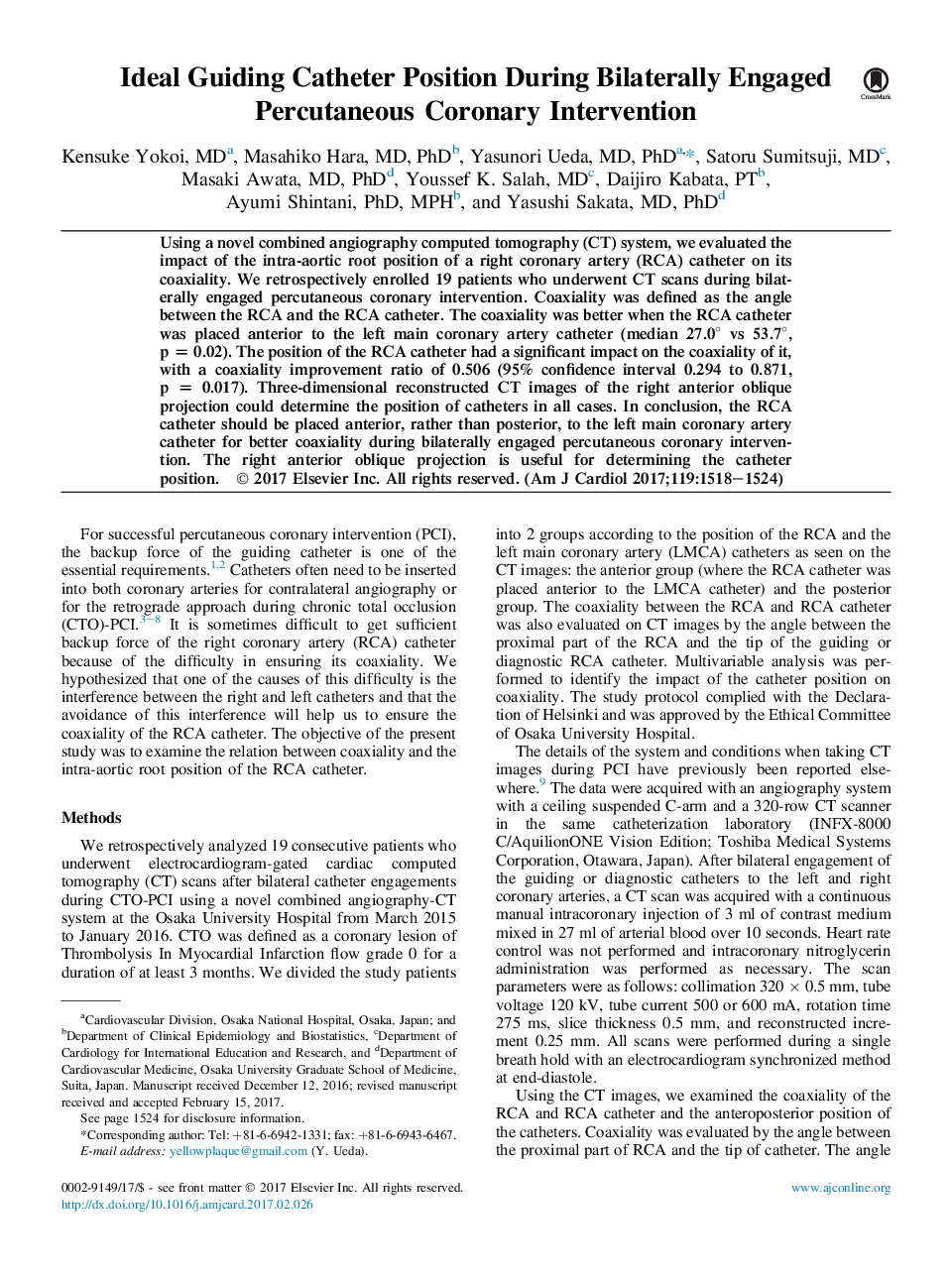| Article ID | Journal | Published Year | Pages | File Type |
|---|---|---|---|---|
| 5595177 | The American Journal of Cardiology | 2017 | 7 Pages |
Abstract
Using a novel combined angiography computed tomography (CT) system, we evaluated the impact of the intra-aortic root position of a right coronary artery (RCA) catheter on its coaxiality. We retrospectively enrolled 19 patients who underwent CT scans during bilaterally engaged percutaneous coronary intervention. Coaxiality was defined as the angle between the RCA and the RCA catheter. The coaxiality was better when the RCA catheter was placed anterior to the left main coronary artery catheter (median 27.0° vs 53.7°, p = 0.02). The position of the RCA catheter had a significant impact on the coaxiality of it, with a coaxiality improvement ratio of 0.506 (95% confidence interval 0.294 to 0.871, p = 0.017). Three-dimensional reconstructed CT images of the right anterior oblique projection could determine the position of catheters in all cases. In conclusion, the RCA catheter should be placed anterior, rather than posterior, to the left main coronary artery catheter for better coaxiality during bilaterally engaged percutaneous coronary intervention. The right anterior oblique projection is useful for determining the catheter position.
Related Topics
Health Sciences
Medicine and Dentistry
Cardiology and Cardiovascular Medicine
Authors
Kensuke MD, Masahiko MD, PhD, Yasunori MD, PhD, Satoru MD, Masaki MD, PhD, Youssef K. MD, Daijiro PT, Ayumi PhD, MPH, Yasushi MD, PhD,
